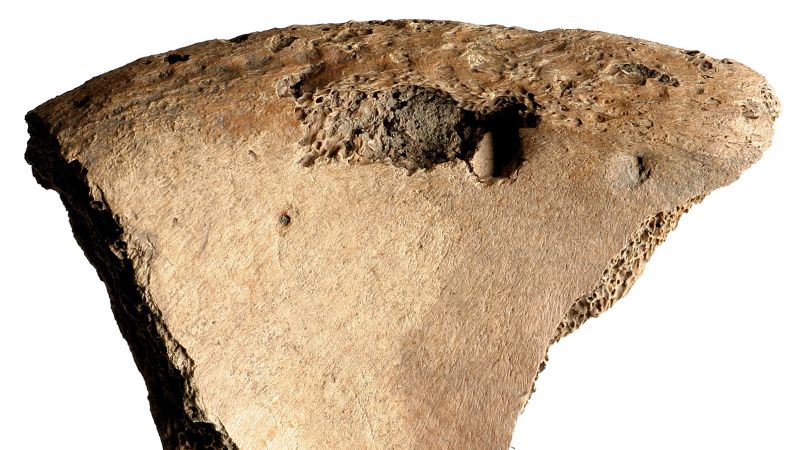The recent archaeological discoveries in York, England, are illuminating a significant aspect of the Roman Empire’s expansive cultural influence in Britain, particularly in how it related to gladiatorial practices. In ancient Roman records, tales of young heroes engaging in life-or-death battles with lions have long captivated historians and archaeologists alike; however, tangible evidence of such encounters remained elusive until recently. A remarkable study has uncovered the remains of a young man, estimated to be between 26 and 35 years old, who bore a fatal bite mark from a large animal, likely confirming the existence of these legendary clashes.
The discovery, which took place in what is now referred to as a “gladiator graveyard”, offers poignant insights into the ancient world. This site, believed to be between 1,825 and 1,725 years old, contains skeletal remains located hundreds of miles from the historical heart of the Roman Empire in Rome. This fueled new discussions about the spread of Roman culture in distant regions, suggesting that the lifestyle and traditions associated with gladiatorial combat were not confined to the famed Colosseum but had permeated the outskirts of Roman influence in Britain.
Researchers initially raised questions about the man’s remains after the burial site’s discovery in 2010. Evidence such as unusual divots found in his pelvis indicated potential involvement of a carnivorous animal in his demise. As the team continued to investigate, they theorized that these particular markings were made by none other than a lion. This pivotal revelation implies that those interred within this graveyard were gladiators engaged in fierce competitions against wild animals, rather than merely soldiers or slaves, as had previously been posited. The scientific collaboration involved in the study brings together various expertise, with contributions from notable scholars such as Malin Holst from the University of York.
In a broader context, the findings from York build upon the mosaic of archeological and biological remnants providing evidence of animal interactions and human lifestyles from the Roman Empire’s reach. The analysis of the human remains highlights how gladiatorial spectacles deeply fascinated—and perhaps terrified—the populations of remote provinces, linking the everyday experiences of ordinary citizens to the grand spectacles of the Roman arena.
Additional intriguing discoveries are arising beyond the stone-laden history of York. Researchers have recently described the ancient trace fossils within Oregon’s John Day Fossil Beds National Monument, unveiling the existence of long-lost animals that roamed the Earth millions of years ago. These trace fossils, which effectively capture footprints of ancient creatures, serve as vital evidence of life forms that existed long before human beings inhabited the planet. Such findings are so groundbreaking that scientists likened studying these fossils to the daunting task of unraveling ghosts from the past, using the ephemeral markers left behind by the inhabitants of different epochs.
Aside from ancient fauna, contemporary conservation efforts are also making headlines, particularly in Africa. The “Dogs4Wildlife” initiative showcases how trained dogs are being employed to combat poaching, with support provided by trainers from Wales after witnessing the tragic impact of illegal hunting on wildlife. Specific dogs like Shinga, a Belgian Malinois, and Murwi, a Dutch shepherd, actively engage in protecting endangered species like the rhinoceros in Zimbabwe’s Imire Rhino and Wildlife Conservancy. This program reflects modern intersections of wildlife conservation and community engagement, emphasizing the commitment shared by various global citizens toward preserving biodiversity.
The scientific community also recently noted significant developments, including a Pakistani astronaut set to become the first foreign national aboard China’s Tiangong space station. Meanwhile, in a striking juxtaposition of historical and modern exploration, researchers uncovered remnants of a 1940s Ford automobile inside the sunken USS Yorktown, emblematic of military history intertwined with everyday life during World War II.
In conclusion, as our understanding of the natural world and human history expands, it becomes increasingly evident that connections stretch across millennia. The lessons gleaned from the past, whether conveyed through the gladiator graves of ancient Rome or the fossilized tracks of prehistoric creatures, enrich our present-day efforts to protect and appreciate the interconnectedness of life on Earth. As we stand at the juncture of historical inquiry and contemporary challenges, the narratives of our ancestors continue to inform our actions and aspirations toward a more sustainable future.



